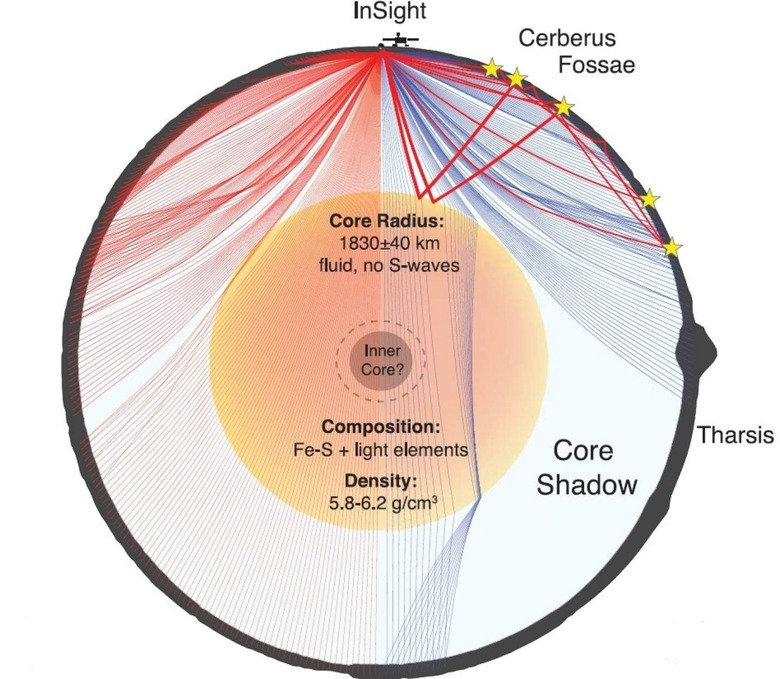NASA InSight Check Out What's Inside Mars
In 2018, a NASA spacecraft called InSight landed on the surface of Mars. Before InSight landed on the surface, all other missions, including rovers and orbiters studying Mars, concentrated on the surface of the Red Planet. However, InSight was different because it was designed to study Mars' interior using a seismometer.
InSight is a stationary lander, and its seismometer has discovered details about the deep interior of Mars for the first time. Three new papers based on seismometer data were published recently, giving details on the depth and composition of the Martian crust, mantle, and core. Data used in the studies confirmed that Mars has a molten center.
The composition of Mars is significantly different from the composition of Earth, which has a molten outer core and a solid inner core. Scientists are continuing to learn more about the interior of Mars to determine if the planet might have a solid inner core like Earth. InSight principal investigator Bruce Banerdt said that the teams began putting together the concept for the mission over a decade ago, and the information in the papers published is what the researchers hoped to get.

The published papers represent the culmination of the "work and worry" over the past decade, according to Banerdt. Since landing, the seismometer aboard InSight has recorded 733 distinct marsquakes. About 35 of those were between magnitudes 3.0 and 4.0 and provided the data used in all three papers. Seismic waves produced by the quakes vary in speed and shape as they travel through different materials inside the planet.
Variations give seismologists a way to study the planet's inner structure to learn more about how it was created. One major part of the mission for InSight was to measure the depth, size, and structure of the layers Mars is made of. Each of the three papers focuses on a different layer of the planet. As it turned out, the crust was thinner than expected and may have two or even three sub-layers going as deep as 12 miles for two, or 23 miles if there are three. Beneath that is the mantle extending 969 miles below the surface with a core with a radius of 1137 miles.
